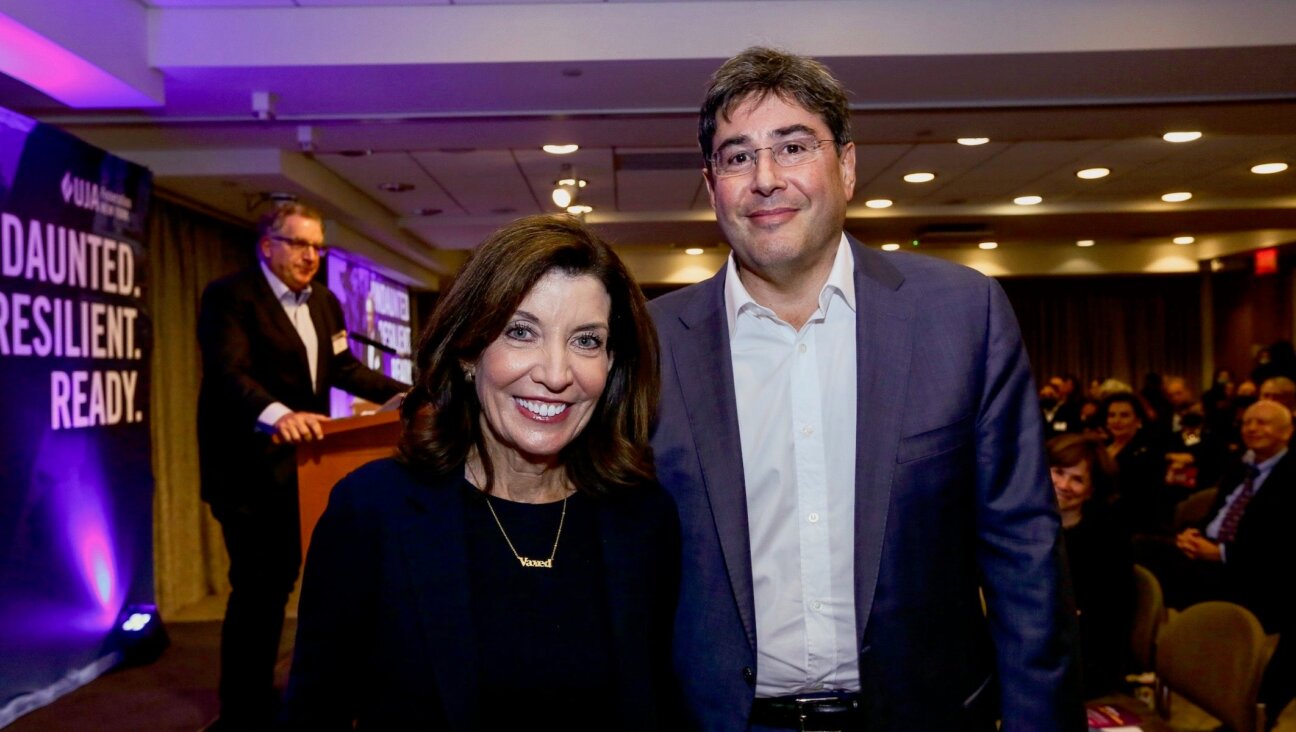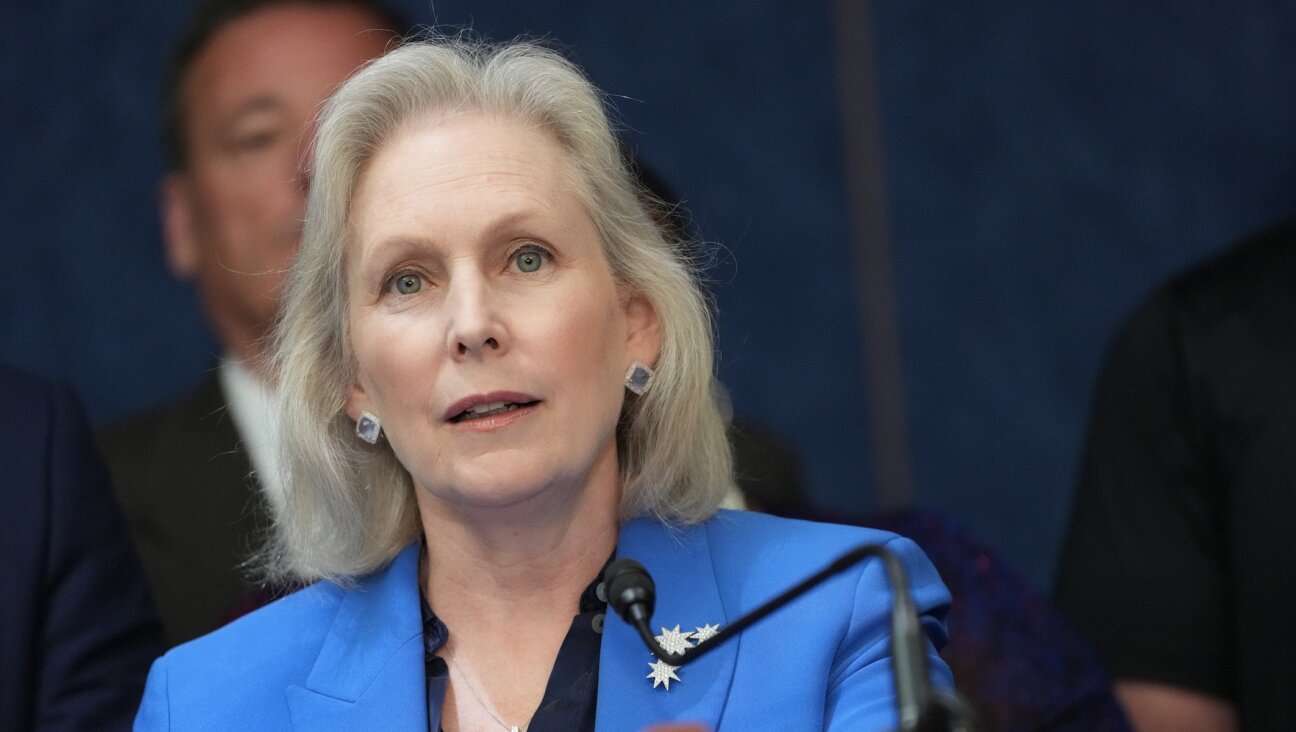Meet Pesach II: Unearthly Beauty of Second Chances

Image by Wikimedia Commons
If you missed the holiday yesterday, take a moment to give it a second look. Yesterday was, after all, the Jewish festival of second chances. If you haven’t heard of it before, take a moment to catch up.
The formal name of the day is Pesach Sheni, or “Second Passover.” It’s decreed in the Bible (Numbers 9:4-13) as a make-up date, one month after Passover itself, for those who were unable to offer the Passover sacrifice because they’d been on a long journey or, alternatively, ritually defiled by contact with a corpse.
If that doesn’t speak to you, try this: This year, the Pesach Sheni festival of second chances offered us a second chance to look at a short essay of unearthly beauty by Jonathan Mark, posted on his Jewish Week blog in 2010 and reposted yesterday at a reader’s request. Think of this as a second chance to take advantage of yesterday’s second chance to learn of the wonders of the Festival of Second Chances. You won’t be sorry.
But before you click away, there’s something else in the holiday that’s quite remarkable and worthy of a second look. According to the biblical account, Second Passover wasn’t God’s idea. Moses asked for it at the request of “some men who were unclean by reason of [contact with] a corpse,” leaving them unfit to offer sacrifice on the appointed day. The scripture doesn’t say who those men were, but the later commentators suggest (after a fascinating debate — more on that later) that they were the crew assigned to carrying the bones of Joseph back to the holy land. Jonathan Mark likes that theory. After all, nobody ever knew more about second chances than the guy who was sold into slavery and ended up running the empire.
But, you might ask, what’s the deal with carrying Joseph’s bones back to Canaan? The short answer is that Joseph asked his brothers to swear it would happen some day (Gen. 50:24-25), Moses kept the promise (Ex. 13:19) and Joshua saw to their burial in Shechem (Josh. 24:32), back where the trouble all started (Gen. 37:12-28). The longer and more adventurous approach is to take a peek at a book called “Joseph’s Bones: Understanding the Struggle Between God and Mankind in the Bible” (Amazon or free PDF download).
Written in 2007 by University of Maryland political philosopher Jerome Segal (founder of the lefty Jewish Peace Lobby), it re-reads the biblical narrative to place the return of Joseph’s bones in a new and unexpected context. In Segal’s telling, the Joseph saga becomes an underground counter-history of the Jews’ relationship with God. The usual reading of the Bible is as a tale of an all-wise God slowly taming the wild impulses of humankind, and of Israel in particular, to elevate us into moral beings. Segal finds a subversive, alternative narrative of the struggle of humankind, and the children of Israel in particular, to tame and elevate a God who starts out impulsive and cruel and only gradually learns to be a loving, morally uplifting Master.
I’m not doing it justice — it’s far too complex to sum up in a paragraph. It’s an easy, enjoyable read, but you have to approach it with an open mind since it flies in the face of much of the given tradition. If you’ve ever found yourself struggling to find a place for yourself within the chain of Jewish tradition, you might find it as exhilarating as I did. My colleague Jay Michaelson, in his 2007 Forward review, found it intriguing as Midrash — fanciful commentary — but unlikely as a serious analysis, which Segal seemed to want it to be. On the other hand, Jack Miles, author of the Pulitzer Prize-winning “God: A Biography,” wrote in a Tikkun review that it was “Brilliant” and that “Nothing quite like it has appeared in years.”
As a side note, one of the things to gain from a reexamination of the Joseph story, whether through Segal or shorter musings by Rabbi Sue Levi Elwell , Jill Hammer or the masterwork of Jewish lore, Louis Ginzberg’s “Legends of the Jews”, is an understanding of the passions of the religious zealots — Yitzhar settlers, Bratzlav Hasidim, hilltop youth and others — who are so devoted to Joseph’s Tomb in Shechem, today’s Nablus. The yeshiva that was founded there, Od Yosef Chai (“Joseph Still Lives”) was relocated to nearby Yitzhar during the Second Intifada, and was tagged by the military as a hotbed of violence and turned into a military base last month. The tomb itself, in the heart of Nablus, is a traditional place of Jewish pilgrimage, and after the place was evacuated and the yeshiva was relocated to Yitzhar, the tomb became a source of repeated tension between troops trying to avoid clashes and would-be pilgrims sneaking past army lines to pray at the tomb.
I mentioned earlier that the identification of the pallbearers who first asked for a Second Passover with the bearers of Joseph’s bones was debated among the sages. In the Talmud (Sukkah 25b), Rabbi Yossi the Galilean makes that case, while his sometime rival Rabbi Akiva identifies them with Mishael and Elzaphan, who were assigned to dispose of the remains of Aaron’s sons Nadav and Avihu. The sons of Aaron had been struck dead in the course of bringing “alien fire” to light incense at the altar (Lev. 10:1-10), instead of waiting patiently for God to send fire as commanded (Lev. 9:24). If the pallbearers are Mishael and Elzaphan, they represent the traditional narrative of the top-down, all-knowing God who demands only obedience. If the men in question are carrying Joseph’s bones, then their initiative at asking God to ease the rules of the sacrifice follows the image of Joseph as the inspiration for a people’s religion led from below.
Enough said. Now do yourself a favor and go read Jonathan Mark’s words.
























